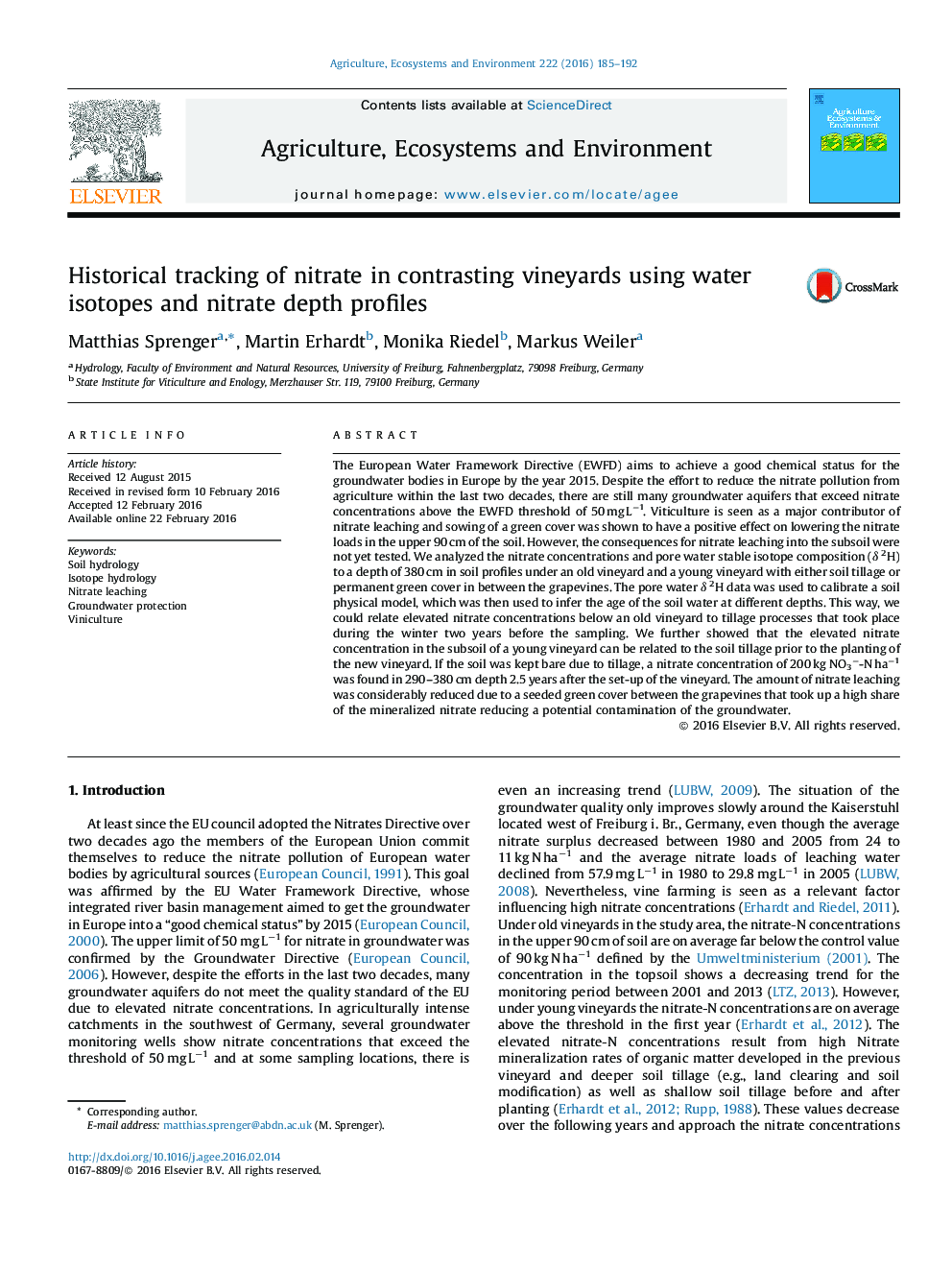| Article ID | Journal | Published Year | Pages | File Type |
|---|---|---|---|---|
| 2413591 | Agriculture, Ecosystems & Environment | 2016 | 8 Pages |
•Pore water stable isotopes allow dating elevated subsoil nitrate-N concentration.•Elevated nitrate-N concentrations can be related to the vineyard installation.•Soil tillage during winter induces elevated subsoil nitrate in a vineyard in yield.
The European Water Framework Directive (EWFD) aims to achieve a good chemical status for the groundwater bodies in Europe by the year 2015. Despite the effort to reduce the nitrate pollution from agriculture within the last two decades, there are still many groundwater aquifers that exceed nitrate concentrations above the EWFD threshold of 50 mg L−1. Viticulture is seen as a major contributor of nitrate leaching and sowing of a green cover was shown to have a positive effect on lowering the nitrate loads in the upper 90 cm of the soil. However, the consequences for nitrate leaching into the subsoil were not yet tested. We analyzed the nitrate concentrations and pore water stable isotope composition (δ2H) to a depth of 380 cm in soil profiles under an old vineyard and a young vineyard with either soil tillage or permanent green cover in between the grapevines. The pore water δ2H data was used to calibrate a soil physical model, which was then used to infer the age of the soil water at different depths. This way, we could relate elevated nitrate concentrations below an old vineyard to tillage processes that took place during the winter two years before the sampling. We further showed that the elevated nitrate concentration in the subsoil of a young vineyard can be related to the soil tillage prior to the planting of the new vineyard. If the soil was kept bare due to tillage, a nitrate concentration of 200 kg NO3−-N ha−1 was found in 290–380 cm depth 2.5 years after the set-up of the vineyard. The amount of nitrate leaching was considerably reduced due to a seeded green cover between the grapevines that took up a high share of the mineralized nitrate reducing a potential contamination of the groundwater.
Graphical abstractFigure optionsDownload full-size imageDownload as PowerPoint slide
